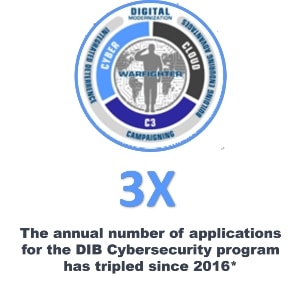
Zero Trust Data Access (ZTDA) is critical for DIB cybersecurity compliance.
The 2024 DIB Cybersecurity Strategy demands granular control and logging of access to defense-related data. ZTDA enforces continuous authentication, least-privilege, and real-time audit of file access—ensuring compliance with new era regulations while securing both on‑premises and hybrid environments.T
Zero Trust Data Access for DIB Cybersecurity Strategy
Estimated reading time: 2.5 minutes
Table of Contents
What is the Defense Industrial Base (DIB) Cybersecurity Strategy 2024?

What are the Goals of the DIB Cybersecurity Strategy 2024?
The strategy outlines a set of goals and objectives that are aligned with interagency efforts and were developed in coordination with the DIB to achieve a secure and resilient DIB information environment. The strategy aims to promote industry competitiveness, innovation, and sustainable growth.
Here are the four main goals of the DIB Cybersecurity Strategy 2024:
- Strengthen the DoD governance structure for DIB cybersecurity.
- Enhance the cybersecurity posture of the DIB.
- Preserve the resiliency of critical DIB capabilities in a cyber-contested environment/
- Improve cybersecurity collaboration with the DIB.
The DIB Cybersecurity Strategy 2024 serves as the DoD’s strategic plan to sustain a more resilient defense ecosystem, capable of prevailing within and through the contested domain of cyberspace. It supports the directives and priorities of the National Defense Strategy, the National Cybersecurity Strategy, and the DoD Cyber Strategy.
How Zero Trust Data Access Helps the Requirements of the DIB Cybersecurity Strategy.
Zero Trust Data Access (ZTDA) as implemented by FileFlex Enterprise can help the Defense Industrial Base (DIB) meet the key requirements of the DIB Cybersecurity Strategy 2024 in several ways:
-
Strengthens DoD Governance:
- Granular access controls and policy decision points for unstructured data provided by Zero Trust Data Access can support the development of regulations governing cybersecurity responsibilities, enhancing interagency collaboration and compliance with DoD governance structures. See Embracing Zero Trust Data Access for IT-Controlled Chain-of-Command.
-
Enhances Cybersecurity Posture:
- A Zero Trust Data Access architecture, including AES256 end-to-end encryption, helps evaluate and improve the cybersecurity posture of the DIB by ensuring that sensitive information is protected from unauthorized access, thereby aiding in compliance with DoD’s cybersecurity requirements. See CMMC Compliance for File Sharing, Access and Collaboration of CUI Using Zero Trust Data Access.
-
Preserves Resiliency:
- By providing secure, granular access to data without exposing the infrastructure, Zero Trust Data Access as implemented by FileFlex Enterprise aids in prioritizing the cyber resiliency of critical DIB production capabilities, even in a cyber-contested environment. See The FileFlex Enterprise Commercial Platform for Zero Trust Data Access.
-
Improves Collaboration:
- The platform’s support for secure file sharing and transfer capabilities enables improved cybersecurity collaboration within the DIB. It allows leveraging collaboration with commercial internet, cloud, and cybersecurity service providers to enhance DIB cyber threat awareness. See Content Collaboration Using Zero Trust Data Access.
Overall, Zero Trust Data Access as implemented by FileFlex Enterprise aligns with the strategic goals of the DIB Cybersecurity Strategy 2024 by providing a secure framework that supports the protection of critical data and infrastructure, enhances regulatory compliance, and fosters a collaborative security environment.
| Requirement | Traditional Approach | With ZTDA (FileFlex) |
| Zero Trust adoption | IT network controls only | File-level zero trust access |
| Access control granularity | Role-based or manual | Per-user, per-file, contextual |
| Monitoring & audit | Periodic / system logs | Real-time, immutable audit trails |
| Compliance alignment | Partial zero trust frameworks | Meets DIB requirements for data-level controls |
| Implementation path | Often disruptive | Initiative-aligned overlay into existing systems |
Conclusion: Using Zero Trust Data Access to Meet the DIB Cybersecurity Strategy 2024
In conclusion, the Defense Industrial Base Cybersecurity Strategy 2024 stands as a strong framework for improving the strength of our defense ecosystem against cyber threats. Through its goals of supporting governance structures, strengthening cybersecurity posture, preserving resiliency, and encouraging collaboration, the strategy paves the way for sustained industry competitiveness and innovation. Integration of Zero Trust Data Access, as implemented by FileFlex Enterprise, further improves this strategy by providing granular access controls and robust encryption, advancing compliance, and facilitating collaboration. Together, these elements point the way to a more secure and collaborative defense industrial base, ready to navigate the challenges of the digital age and safeguard our nation’s interests effectively.
Learn More About FileFlex Sign Up for a Free TrialFrequently Asked Questions
What is the 2024 DIB Cybersecurity Strategy?
The 2024 DIB Cybersecurity Strategy requires defense contractors to adopt zero trust, enhance data access control, and ensure real-time monitoring of defense-related information.
How does ZTDA support DIB cybersecurity requirements?
ZTDA enforces continuous verification, granular file-level permissions, and immutable audit trails—meeting DIB mandates for strict access control and traceability of sensitive data.
Is ZTDA required by DIB strategy?
ZTDA is not mandatory, but it directly supports DIB strategy goals by applying zero trust access principles where they matter most—on data access within sensitive environments.
Can FileFlex enforce DIB-level access controls?
Yes. FileFlex applies Zero Trust Data Access to defense-related files across on-prem, hybrid, and cloud platforms—enforcing policies based on identity, device, location, and context.